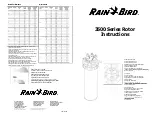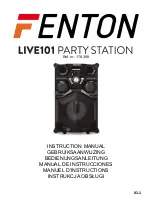
5.3. Beyond the Solina
If you were to compare the Main Panel of Solina V to the front panel of an original Solina,
you'd notice some small differences. The original had a fine-tuning knob but no pitch bend
or mod wheels; it didn't have a master volume control; and Solina V adds three extra
switches – one for the Humana voice and two for the Ensemble. It's worth talking about
these extra features a bit more, so you can understand why they're so important to Solina
V.
5.3.1. Humana
In the mid-1970s, several companies were rushing to create the world's first
polyphonic
synthesizer – a synth that could play chords, with each voice being a complete audio
chain of oscillator, filter, and amplifier, with its own envelopes for brightness and volume.
Paraphonic synthesizers like the Solina had only one volume envelope, and technically no
filter at all; they had 49 notes of polyphony, but no real articulation. In the process of trying
to get from paraphonic synthesis to "true" polyphony, a variety of unusual machines were
built using various new designs... and the most famous (or infamous) was the
Polymoog
.
Created in 1975, the Polymoog was an analog synthesizer with 71 keys (which were velocity-
sensitive, a first for any analog synth), and each key had its own voice card and audio path.
Technically it was a fully polyphonic analog synthesizer that could be played like an electric
piano, and it garnered a lot of interest when it came out. However, its sound was subject
to some disappointing "paraphonic" limitations, and it was incredibly expensive and failure-
prone – it had (and has) its fans, but it was a disaster for Moog.
In 1978, Moog Music shipped a simplified version called the Polymoog Keyboard, which gave
the user 14 preset voicings instead of the original nine. One of these new voicings was called
Vox Humana, and it put the Polymoog in the history books as something more than an
expensive flop, thanks to its pervasive use by rising star Gary Numan on his third album
The
Pleasure Principle, including the worldwide Number One hit "Cars". His musical arrangement
style, which was drenched in Vox Humana, became so popular and so recognizable that it
was often dubbed "Vox Numana".
Gary Numan used the Polymoog Keyboard as a modern string ensemble, and the Vox
Humana sound serves as an excellent basis for the sorts of thick orchestrations that
keyboards like the Solina can do so well. That makes Humana a great fit as an extra – and
quite different-sounding – Upper instrument voice for Solina V. It takes the instrument in a
completely new (and very cool) direction – give it a try!
5.3.2. Ensemble
It's easy to describe what the Ensemble effect does for the Solina, and for many other
string machines. Basically, it's the 'magic spice': everything you put it on goes from bland to
delicious!
51
Arturia - User Manual Solina V - The Main Panel
















































